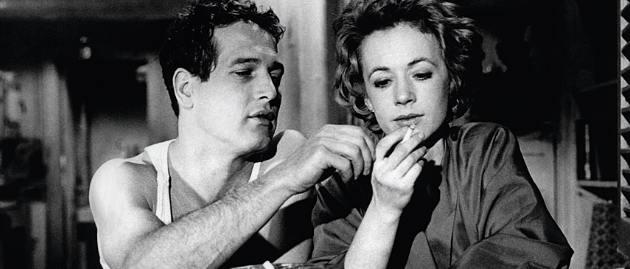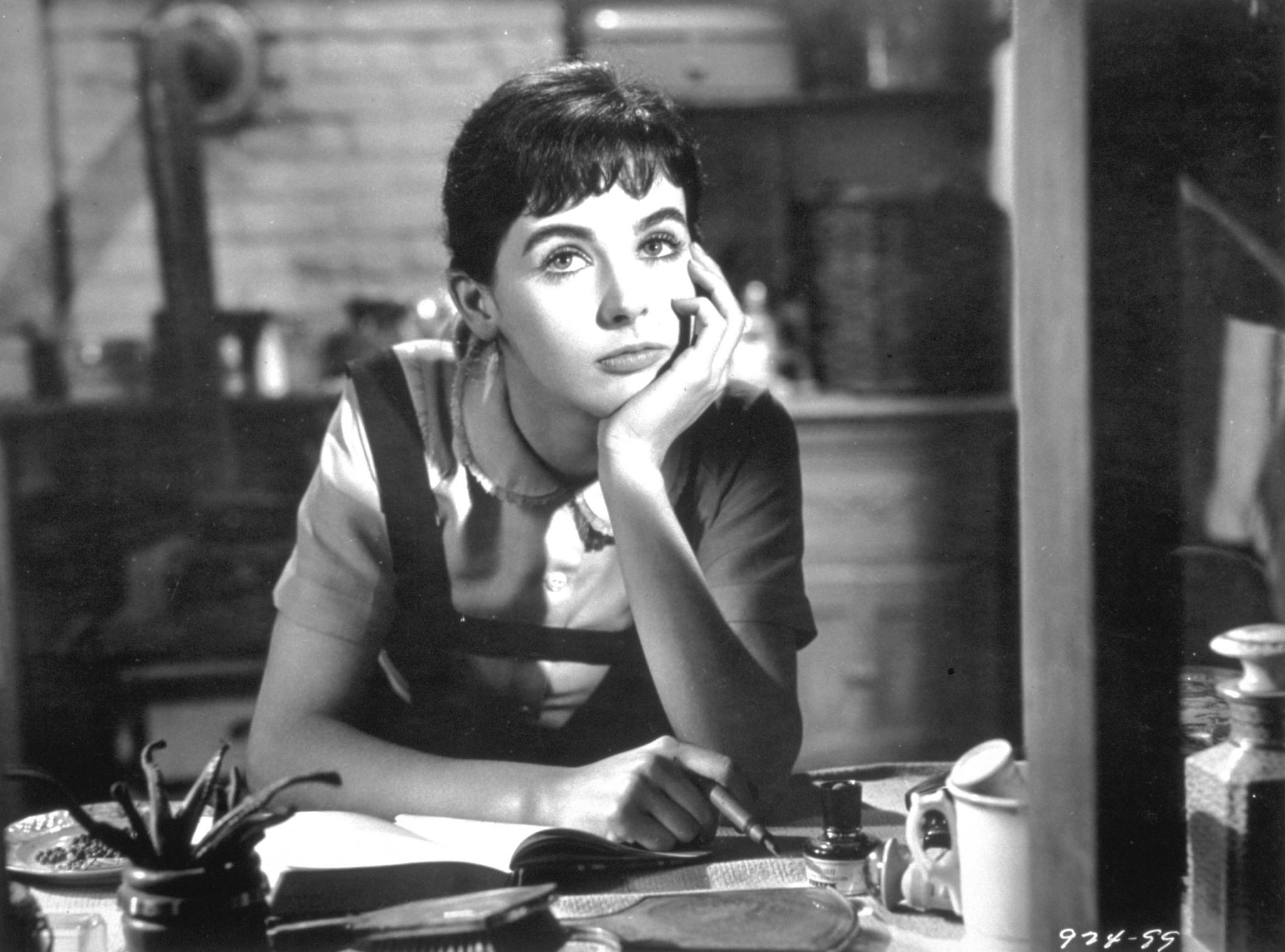
Fox founder Daryl Zanuck never tired of producing, and even at the ripe old age of 60 he once again took up the task to spearhead the most ambitious WWII to date. He bought the rights to Cornelius Ryan’s celebrated novel about D-Day, The Longest Day, and brought it to vivid, B&W life in the fall of 1962. A WWI soldier himself, he no doubt felt this film needed to be made, and the honorific tone permeates every scene of this grand, three-hour epic. It’s got John Wayne, Robert Mitchum, brave American soldiers dying for their country; we’re only missing the National Anthem to complete the picture.
Yet, in many ways this departed from he usual patriotic fare of the era. Zanuck made a concerted effort not to emulate glory-filled paeans of the past. Day, with its gritty black and white cinematography, more closely resembles the stark newsreel footage of the war movie audiences had been watching for decade. Apart from the occasional Beethoven’s Fifth and a few kettle-drum booms, there is no score to speak of. In the interest of verisimilitude, all foreigners speak their own, respective languages (mainly French and German), with subtitles as translation. And battlefield speeches, a staple of the war movie genre, are kept to a minimum – most of the dialogue s information-based, and most of it historically accurate, according to researchers. The result? A hit, both critically and commercially; audiences, by the 1960s, no doubt felt it was time for a more realistic look at a war they had spent the 50s trying to put past themselves.
It’s June 5th, as he film opens, and across Europe the questions buzzes: when will the Allies made an amphibious landing in France, potentially liberating the country and marching Eastward to defeat Germany, effective ending the war in Europe? German high command keeps ts codebreakers busy with the query, and the French resistance keeps their ears to the radio for cryptic poetry which might afford the answer. The Americans and Brits are ready, itching to go, in fact, as the scheduled landing has already been postponed due to the weather several times. But U.S. generals Eisenhower and Bradley know that one more postpone would set hem back to July, and so Ike himself makes he official decision: Allied forces will land on the French beaches at Normandy at daybreak on June 6th, 1994: D-Day.
It defies logic, he Germans believe, and so they ignore the possibility. When the likelihood increases, they are afraid to awaken their temperamental Fuhrer, and so entire reserves of potentially lifesaving Panzier divisions are left idle. The paratroopers arrive first, well beyond the bulkheads, in the countryside, primarily to serve as diversionary tactics, particularly with their use of dummy models. Then the warships start shelling the beaches, until finally the infantry arrives – thousands of them – to the defending Germans’ shock. Storming up the Omaha and Utah beaches, they overcome several unexpected obstacles: Henry Fonda, as Teddy Roosevelt Jr., discovers his unit missed the landing point by about ten miles some of the paratroopers miss their mark and wind up, tied up (literally), on trees and church steeples; John Wayne suffers a fractured foot and must conduct his operations infirm, and Robert Mitchum leads his boys up a cliff to take over a strategic German turret, never mind the extensive casualties that might otherwise prohibit such an undertaking.
And of course, we all know the outcome, but even the finale is muted – again demonstrating the grit audiences were ready for. (We close with a shot of an overturned helmet on the beach, and drums rolling as the credits do also.) But at he same time, it’s hard to fathom that the film had mass appeal; I’d presume that much of its audience were veterans themselves, as well as their kith and kin. We go back and forth between so many locations and shuttle between so many characters that I daresay if you’re not a WWII aficionado, you’re bound to be a bit confused. Still, I wasn’t so much asea that I couldn’t get the gist of it, and perhaps I’d even applaud the work for painting such a vast canvas. After all, it was a vast operation, and such a narrative structure was used again in two other films I admired: The Thin Blue Line and Gettysburg.
I mentioned grit as one of Day’s attributes, and of course I’m placing it in a historical perspective with the praise. Since then, the war film has changed immensely, and in many ways Day actually pretty quant compared with modern offerings, especially those which depict the Vietnam War. But even Saving Private Ryan, whose first 30 minutes depicted the same event as Day, upped the ante with its graphic realism and unrelenting intensity.
Of course, that is the film that will inevitable be compared to Day the most, and it probably should be. I think both films are great, and so I’ll refrain from making any qualitative judgments, but it’s interesting to note the differences in their approaches. Steven Spielberg, with Ryan, clearly wanted to show the horror of WWII, something you couldn’t do in 1962 without being perceived as unpatriotic, and so he depicted the landing Allies as ducks in a shooting gallery, picked off wholesale before even stepping on the sand. Day shows this at a distance, but takes care to show just as many charging forward, and underplays their helplessness by showing the preemptive Naval shelling and paratrooper landing.
But, though Day might seem to be the more conventional of the two, it’s also a lot softer on the enemy. With roughly half of the opening devoted to the German side, it actually humanizes them, and paints them more as helpless stewards to a fanatical madman. And – here’s the big thing – the word “Nazi” is never mentioned. In the decades since, at least in the movies, the Germans have become far more vilified, partially due to greater Holocaust awareness and revelations of the true depth of their evil. “Nazi” is sure mentioned in Ryan, and we barely get any kind of depiction of them, certainly not a humanizing one. In essence, Days examination of the war is more a cerebral, stylistic one, certainly not a moral one. It just wasn’t time yet.
And, in being so cerebral, and covering such a vast swath, it keeps you arm’s length from the characters. Day has much to say about its dramatis personae, but little of it is actually dramatic. We’re introduced to a soldier early on who had just won a windfall in poker, and we expect to follow him throughout the invasion, but we don’t really. Loads of grunts and generals are paraded through Day’s first act, only to get lost in the shuffle. Only stars truly stand out. Henry Fonda, as Teddy’s son, is a marvelous depiction of privilege taking a back seat to patriotism, and John Wayne’s officer is all growly gruff, standing out in a scene where he demands that dead, hanging paratroopers be cut down to preserve their dignity. But both stars have pre-packaged personalities; it’s not in the writing, which Ryan just lifted from his novel, or the direction (there were several, one for each nationality).
But Day doesn’t want to be a character study; it wants to be a comprehensive, authentic historical epic. And it is. If it aims to make the viewer think more closely about America’s greatest military event, it succeeded, at least with me. There were times when the film felt like the longest movie (sorry, had to throw that in), but it’s a case where the length justifies the end result, because even if I didn’t enjoy watching every second, I enjoyed reflecting on those seconds. Even the gunplay in the third act, when it turns into Sgt. Rock time.
Random observations: only one title graphic, all credits come at the end (the second time in this collection).
Keep your eyes peeled for the famous scene of Red Buttons hanging from the church steeple by his parachute. He survives! (He doesn’t The Poseidon Adventure).
And look fast for Sean Connery of the Scottish brigade, his last film role before James Bond.
All told, an important film – see it for history, entertainment, and the history of entertainment.
Rating: ***1/2



